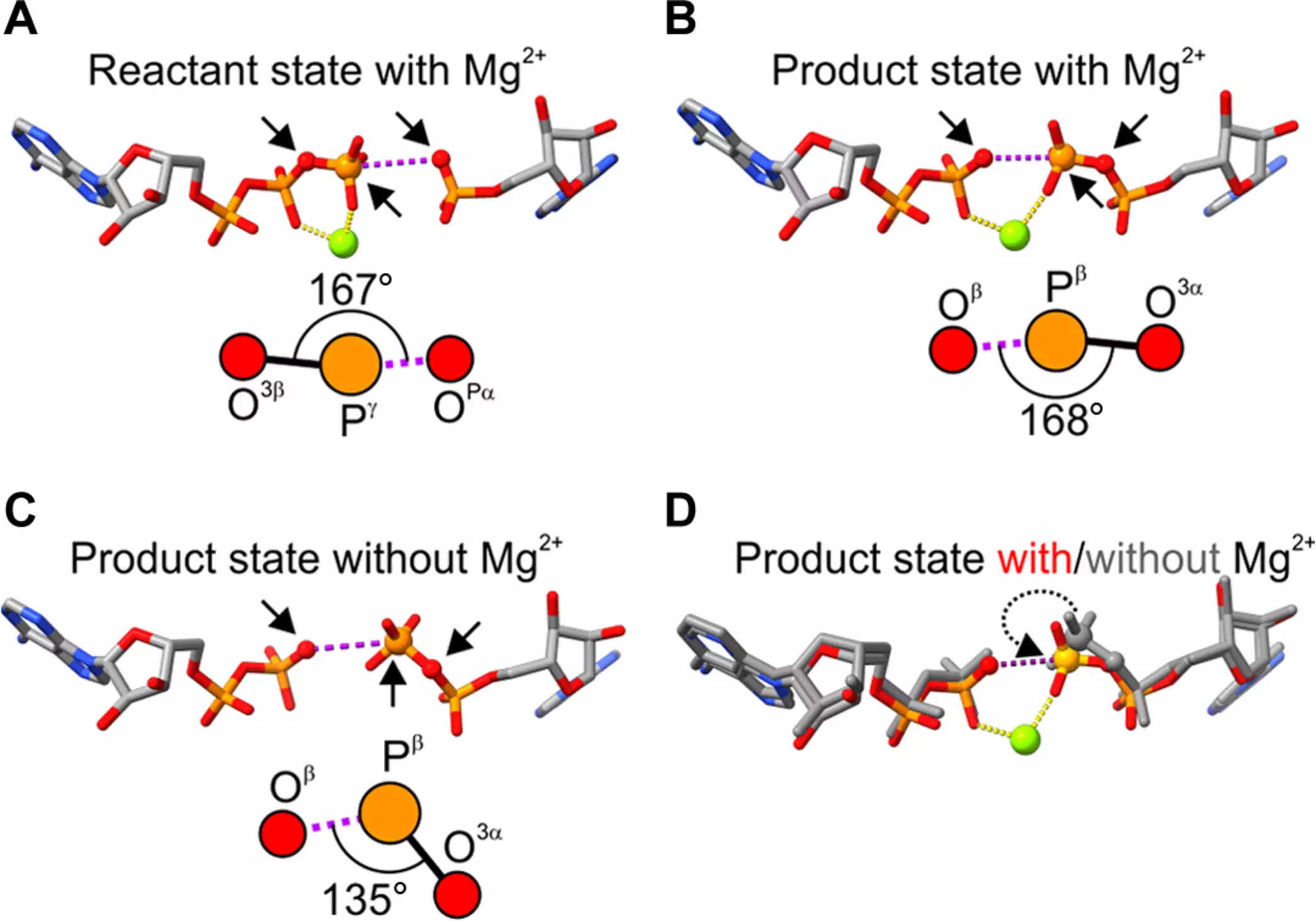Adenosine triphosphate (ATP) is often referred to as the energy currency of the cell, playing a critical role in various biological processes—ranging from muscle contraction and cellular transport to supporting bacterial pathogenicity. Given its ubiquitous nature, understanding the mechanisms behind ATP production is vital for comprehending a range of biological phenomena. Recently, a team of international researchers, led by Professor Magnus Wolf-Watz at Umeå University, made significant strides in unveiling the role of magnesium in ATP synthesis, shedding light on a previously obscured aspect of biochemistry.
The Significance of Magnesium in Catalysis
While magnesium has long been recognized as a facilitator of ATP production through mechanisms such as electrostatic interactions, the complexity of its influence was not well understood. The enzyme adenylate kinase, essential for synthesizing ATP from its precursors, adenosine diphosphate (ADP) and adenosine monophosphate (AMP), operates within a finely-tuned biochemical environment where geometric precision is crucial. Magnesium’s role extends beyond mere participation; it aligns and adjusts the positioning of ADP and AMP, thereby optimizing the enzymatic reaction that culminates in ATP formation.
The research indicates that magnesium acts like a conductor, orchestrating the molecular choreography needed for effective catalytic activity. The discovery reveals that the magnesium atom’s ability to subtly shift angles facilitates the accurate alignment of critical reactants—a detail that could redefine our understanding of catalytic efficiency in enzymatic reactions.
This groundbreaking study employed advanced techniques in both experimental and computational chemistry. The team utilized crystallography to elucidate molecular structures and observe the precise movements of magnesium during ATP synthesis. These structural observations were pivotal; they indicated that even minor adjustments at the atomic level led to significant catalytic outcomes.
Additionally, partnerships with computational chemists allowed the researchers to model and simulate the enzyme’s behaviors. Kwangho Nam’s lab at the University of Texas at Arlington contributed vital insights by linking the angular adjustments of magnesium to broader structural transformations within the enzyme itself. This combination of experimental and computational exploration has forged a crucial connection between molecular structure and enzymatic function, potentially paving the way for more refined biochemical tools and interventions.
Understanding how magnesium modulates ATP production has profound implications across multiple scientific fields. For biochemists, this insight enhances the foundational knowledge of cellular metabolism and energy transfer mechanisms. In biomedical contexts, better comprehension of ATP’s synthesis could lead to innovations in treating conditions where ATP deficiency is a factor—ranging from muscular disorders to metabolic syndromes.
Moreover, since ATP plays a critical role in numerous disease processes, including bacterial infections, the findings might inform therapeutic strategies aimed at disrupting ATP production in pathogens. By manipulating magnesium’s catalytic function, new avenues for drug development could emerge, potentially leading to more effective interventions in infectious diseases.
The Path Forward
The revelations from Professor Wolf-Watz’s lab not only enrich our understanding of ATP production but also illustrate the intricate connections between atomic behavior and broader biological functions. As research continues to delve deeper into these molecular mechanisms, the potential for new discoveries remains vast. It serves as a reminder that even the smallest changes at the micro-level can have cascading effects on life itself.
Given the dual approach of experimental and computational techniques employed in this study, future research might further unravel the complexities of enzymatic activity. As we progress into an era of precision understanding in biochemistry, the influence of seemingly minor elements such as magnesium could hold the key to transformative insights across the biological sciences. In this light, the research team’s findings not only mark a significant milestone in enzyme chemistry but also pave the way for future inquiries into the fascinating world of cellular energy dynamics.


Leave a Reply